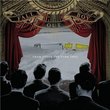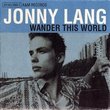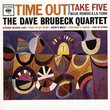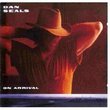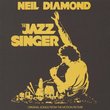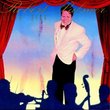| All Artists: Marshall Crenshaw Title: What's in the Bag Members Wishing: 3 Total Copies: 0 Label: Razor & Tie Original Release Date: 1/1/2003 Re-Release Date: 7/22/2003 Genres: Alternative Rock, Folk, Pop, Rock Styles: New Wave & Post-Punk, Singer-Songwriters, Adult Alternative Number of Discs: 1 SwapaCD Credits: 1 UPCs: 793018286923, 805772406827, 829410313766 |
Search - Marshall Crenshaw :: What's in the Bag
 | Marshall Crenshaw What's in the Bag Genres: Alternative Rock, Folk, Pop, Rock
|
Larger Image |
CD DetailsSimilarly Requested CDs
|
CD Reviews(Yawn.) Yet another Crenshaw album of great writing/playing. J. Chasin | NYC, NY | 08/21/2003 (4 out of 5 stars) "I bought the self-titled debut when it came out in 1982, and every other one since. I've seen Marshall over 50 times (a benefit of living in NYC). I've seen him touring every single release, and I've seen him both solo and with a band. (Once I ran into him before a show and I told him I'd seen him 50 times. He looked at me like I was nuts.)I didn't find this one to be the jarring course change that apparently some others did. Certainly the instrumentation is more sublime and subtle (and colorful) than the usual rock combo, but the songs are still coming from that same great wellspring. The gorgeous ""Where Home Used to Be" is kissing cousins with "2541" or "Tell Me All About It." The Prince cover is remarkable for the way it sounds so seamlessly like the song was always meant to have a rockabilly flavor.Crenshaw is, I think, 48. He has been toiling in criminal virtual obscurity for over 20 years, writing beautifully-crafted, charming songs that ooze heart and deserve to be hits, and supplimenting them by selecting perfect songs to cover (you can always count on some surprise or other at his shows; "Substitute," "White Lightning," and "Feliz Navidad" were personal favorites). This record is the logical next step, the extension forward in time from one of America's true hidden treasures. In the notes to the Nine Volt Years, I believe he calls his first two albums his young man albums, noting that everything since sounds different because you can't sound young and starting out after you are no longer young and starting out. This is a guy who has aged as gracefully as is humanly possible in the realm of rock'n'roll. I'm going to see him tonight. I can't wait.Note: If you don't own any of his stuff, this may not be the logical place to start. The anthology that came out a few years back (This Is Easy, I think) is a fine overview. But every single album has three or so absolute gems. I think Field Day (his second) is probably the favorite aong his long-time fans, but he generally plays the most from the first self-titled one in concert. Personally I am also fond of Miracle of Science and Mary Jean and Nine Others. And Downtown. And-- oh hell, all of them." "Cabaret" Crenshaw's Comeback John Stodder | livin' just enough | 07/27/2003 (5 out of 5 stars) "With "What's in the Bag?" Marshall Crenshaw has reinvented himself into the kind of pop star who can sustain a career when the "born to rock and roll" passion fades. Crenshaw was always a far more complex songwriter than most rockers, but with this album, he's finally given himself the freedom to explore genres and rhythms other than mid-60s pop and rock. By doing so, he sounds more committed to his new music than he has on anything since "Life's Too Short." But whereas that album was a piledriver of big stadium beats, this record is shockingly intimate, quiet, at times delicate. I first played it in my car, and it sounded like he was in the back seat singing into my ear. This is especially the case for the two cuts that open the album, both of them painful ruminations, the slow waltz "Will We Ever," and the knotty, brilliant "Where Home Used to Be." In truth, Crenshaw does revert to prior form on several cuts, but more typically, he creates fascinating hybrids of old and new, like "The Spell is Broken" that combines a typical Crenshaw melody and guitar line with a distinctly jazzy drum part and vibraphone. The pastiche of styles seems very organic--as if he's demonstrating that when you turn down the volume, rock can make room for the quieter effects of jazz, folk and country. Lots of great rock-era performers are trying to figure out what to do with their careers as they reach their 50s and even 60s. Mick Jagger, Brian Wilson and Paul McCartney act like jukeboxes for their well-earned hit parades. Led Zeppelin worms into its archives to fill out the historic record. Rod Stewart and Boz Scaggs, among many others, apply their distinctive styles to the great music of their parents' generation. It's all good. But, to me, the most interesting performers are those who risk doing something new, something that feels right for who they are today: Nick Lowe, with his brilliant trio of recent albums, Steely Dan in their two comeback CDs, and now Marshall Crenshaw, who re-energizes his career with "What's in the Bag?"" Album For Crenshaw Fans and Music Lovers John Stodder | 08/08/2003 (5 out of 5 stars) "The collection of songs on this new Marshall Crenshaw album are maybe his best - catchy and melodic but mostly midtempo. This new album may be too subtle and sophisticated for the average listner who was attracted to the uptempo power pop of this fine artist's earlier albums. Give this album a listen. These new songs could have easily been played uptempo with power chords emphasized in the chorus and that crowd would have been happy with another repeat. These songs are even more melodic than Crenshaw's great tunes of the past. They are just played midtempo. Instead of his usual power chords Crenshaw substitutes richer instrumentation in the album's production. I wish when artists grow in a positive new way fans could grow too."
|

 Track Listings (11) - Disc #1
Track Listings (11) - Disc #1